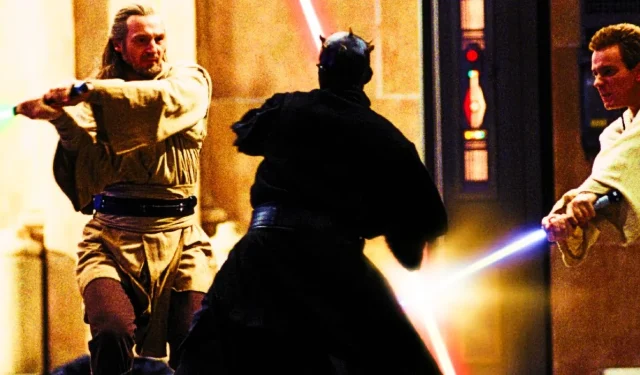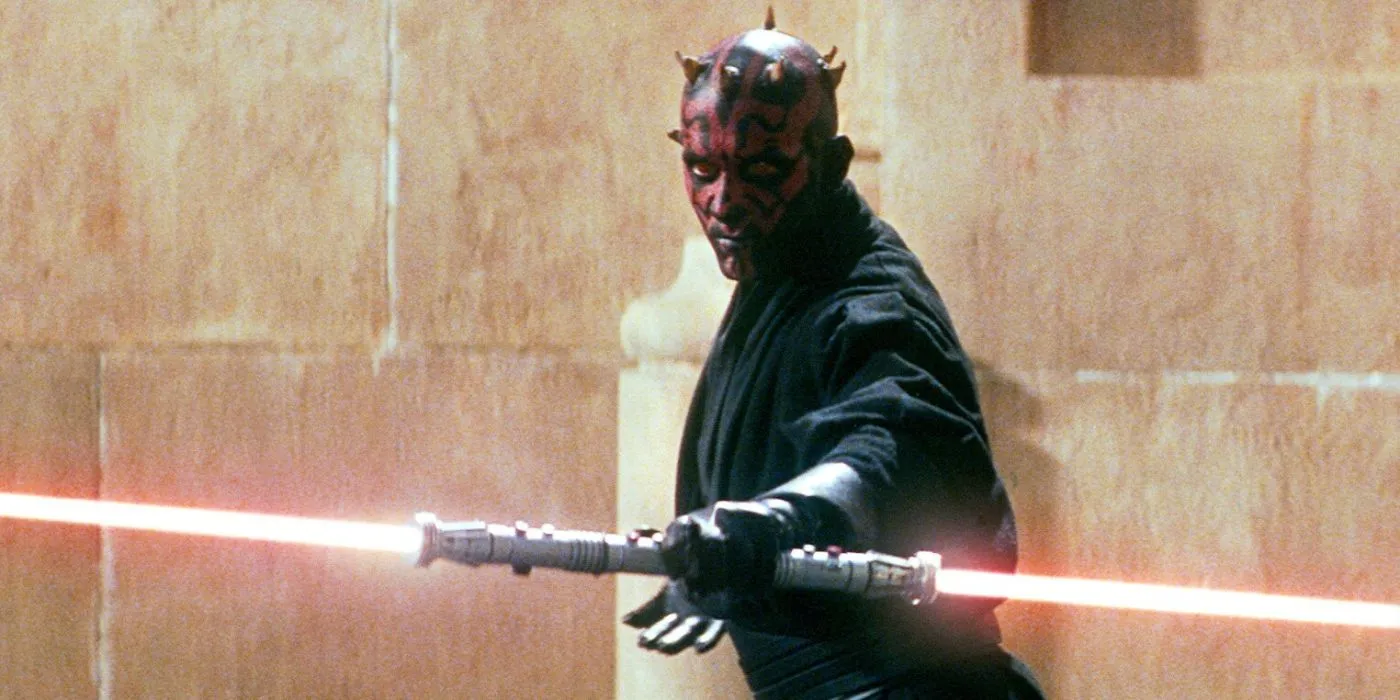
In Star Wars: Episode I – The Phantom Menace, Qui-Gon Jinn faced defeat in his duel against Darth Maul, a loss heavily influenced by his choice of lightsaber combat form. Within the Star Wars universe, lightsaber combat is categorized into seven distinct forms. Most combatants begin with Form I, known as Shii-Cho, and subsequently develop a unique style that leans towards one of the remaining six forms. Qui-Gon Jinn notably preferred Ataru, also referred to as Form IV.
Ataru is characterized as a dynamic and aggressive form of lightsaber combat that emphasizes rapid movements and acrobatic maneuvers. This style is exemplified by Jedi Master Yoda, who is perhaps its most recognized practitioner, although other users of Ataru may not consistently employ its acrobatic elements. Alongside Qui-Gon and Yoda, adept users of this form include renowned warriors such as Mara Jade, Ki-Adi-Mundi, and Cay Qel-Droma. While Ataru can be a formidable approach, it left Qui-Gon vulnerable to Darth Maul during their iconic confrontation.
Darth Maul Took Advantage Of Ataru’s Greatest Weakness

While Ataru offers several advantages, it is not without its shortcomings. The form excels in the early stages of a confrontation, particularly when the practitioner is engaged in a duel against a single opponent in an open area. However, Ataru’s aggressive style can drain its user’s stamina rapidly, leaving them increasingly vulnerable as the fight continues. Additionally, confined spaces can severely hinder the effectiveness of Ataru, limiting mobility and agility.
As indicated in works such as Jude Watson’s Star Wars Journal: Darth Maul and Ryder Windham’s The Wrath of Darth Maul, Darth Maul was acutely aware of Qui-Gon Jinn’s reliance on Ataru, including its inherent weaknesses, during their initial confrontation on Tatooine. In their second duel on Naboo, Maul strategically capitalized on these vulnerabilities. By maintaining a predominantly defensive posture, he endured Qui-Gon’s aggressive attacks and encouraged Jinn to engage in a more confined location. A brief pause did nothing to restore Qui-Gon’s stamina, ultimately leading to the moment when Maul found an opening to defeat the Jedi Master.
Furthermore, it is worth noting that Darth Maul’s own combat style was rooted in Form VII, known as Juyo. While Juyo can struggle against multiple opponents, Maul successfully mitigated this limitation by isolating Obi-Wan Kenobi from Qui-Gon, allowing him to confront the Jedi Master on his own terms.
Darth Maul Was Trained To Take Advantage Of All The Jedi Weaknesses

Darth Maul served as a Sith Lord in the lineage of Darth Bane. His training was specifically geared towards identifying and exploiting the weaknesses inherent in Jedi Knights. This strategic approach was a hallmark of Bane’s Dark Lords, each of whom sought to undermine the Jedi and the Republic from the shadows. Under the tutelage of his master, Palpatine (Darth Sidious), Maul was educated on the strengths and limitations of all seven lightsaber forms and trained specifically to leverage their weaknesses. Consequently, he adeptly adapted to Qui-Gon Jinn’s combat style, ultimately turning it to his advantage during their confrontation in The Phantom Menace.
|
Upcoming Star Wars Movies |
Release Date |
|---|---|
|
The Mandalorian & Grogu |
May 22, 2026 |




Leave a Reply